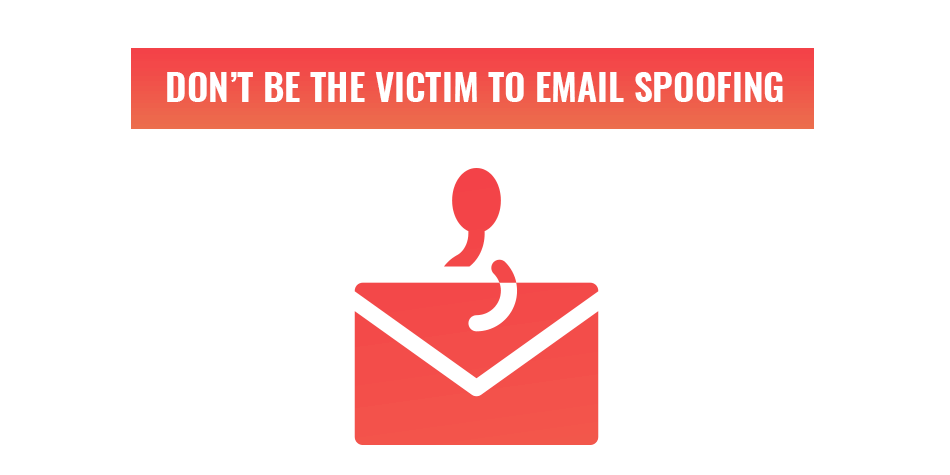
How to avoid becoming the victim of email spoofing
It doesn’t matter if it’s your business or personal accounts, email spoofing is a very real threat that we want to avoid. The problem is, with thousands of spoofing attacks every day, it can be difficult to not fall victim to some of them. During this article, we are going to go over what email spoofing is and what are the steps that your company can take to avoid it from ever affecting your business.
What is Email Spoofing?
In a nutshell, all forms of spoofing are a tactic to perform phishing scams. These scams make use of deception to trick the victims into taking some kind of action that is harmful to themselves and the company or person being impersonated.
Emails are the most common form of spoofing and they cost organisations and people millions every year. It doesn’t stop there, when cybercriminals impersonate brands, it can hurt your brand trust or open the inner workings of a company to damaging viruses.
If you have ever been the victim of a spoofing attack, you may have received emails or phone calls from your own number. While those may be obvious attacks that we can recognise, it’s when the attack impersonates someone else that this becomes a problem. This can come in the form of an email from your boss or a client.
Without a further inspection, you or one of your employees may engage with the email as though it was real and give the cybercriminal exactly what they want. This could include personal or financial information, intellectual property or data, a transfer of funds, login credentials or the download of malicious software.
Tip: We recommend keeping your whole company safe online, to boost your protection, Find out how you can improve your security on WordPress.
How does email spoofing work?
While impersonating your brand and making a convincing deception may sound like a difficult thing to do, the scariest part is that it’s not. Email spoofing is a very simple process that uses an SMTP server and email software.
All a cybercriminal needs to do after that is make the email headers look like they are coming from someone other than them. Email spoofing sometimes involves other types of spoofing to be more convincing. These can include email addresses, domains and display names. Cybercriminals will often research companies and individuals they wish to spoof to get all of this data.
If you are not yet convinced that this is a serious threat; these cybercriminals become you or your brand and commit crimes in that name. Employees and clients might hand over valuable information which can cost you money and trust.
Tip: When it comes to protecting valuable information that cybercriminals can use to spoof, preventing brute force attacks on WordPress is an important security step.
How to avoid email spoofing.
If you have ever looked at your inbox and seen too many “undeliverable” notifications, it’s a sign that your email address is being spoofed. This is not a situation that anyone wants to be in. That is why it is important that we take measures for this to never happen, especially in today’s digital age.
Avoid spoofing from your domain.
When it comes to stopping cybercriminals from using your domain, there are three tools that you need. In combination, they can protect your email and domain from spoofing.
The first is called Sender Policy Framework (SPF). This tool will outline valid IP addresses that are approved to send emails from your domain.
Next is a tool called Domain Keys Identification Mail (DKIM). This will prevent spoofing emails from being sent from your domain. It does this by updating the Domain Name System (DNS) of your email to add a digital signature. This is a way to guarantee that the email remains unaltered from the moment it was sent.
If you thought that last acronym was long, then prepare yourself for the last tool. A Domain-based Message Authentication, Reporting and Conformance (DMARC) is a tool that authenticates, reports and applies policy protocol. It uses both SPF and DKIM to provide information about the email domains.
Use an email signing certificate.
By making use of email signing certificates, you can supply a way for your clients and employees to confirm your identity when they receive an email. When you set this up, inform the receivers of your emails about the certificate. That way they can trust what comes from you and spot spoofing.
Spot the problem before it affects you.
One of the most common deceptions, when a cybercriminal is targeting your business, is to impersonate an owner or manager. This makes your employees the most vulnerable targets to receive spoof emails. Knowledge and understanding are the most powerful tools to combat this threat, so we recommend training in cyber awareness. Everyone in the company should get involved as this threat affects both the company and its employees.
With the whole team on board, there are two checks that you need to make to avoid email spoofing. The first check-in in the email header where we will look for the following common email spoofing traits:
- Content that doesn’t match the sender.
- Poor grammar and punctuation.
- Urgency to act or do something.
- Inaccurate sender information.
Now that we have taken steps to avoid being the victim of email spoofing, everyone in your company is equipped to find spoof email. But what do you do when you find an email that is considered spoof?
The first step to take is to inform your companies IT team. Forward the email in question with a warning about your suspicion. If the email was sent from a known email provider, you should inform that provider. Similar to the IT team, forward the email with a warning so that they are aware of the issue. Unfortunately, cybercriminals often use free email services and close the email account before any reports can be made. The last step is to inform the company or individual who is being impersonated about the spoof email so that they can take their own actions against it.
Get the best digital security advice from Web2Web.
You wouldn’t leave a physical store without an alarm system, so don’t leave your online business without one either. When it comes to internet security, it’s important that your company has the right measures put in place. At Web2Web, we don’t just develop in the digital world, we make it a more secure and safer place to do business. If you want to put your business online or make your current website a better place to do business, chat to us today.

 021 551 2060
021 551 2060



